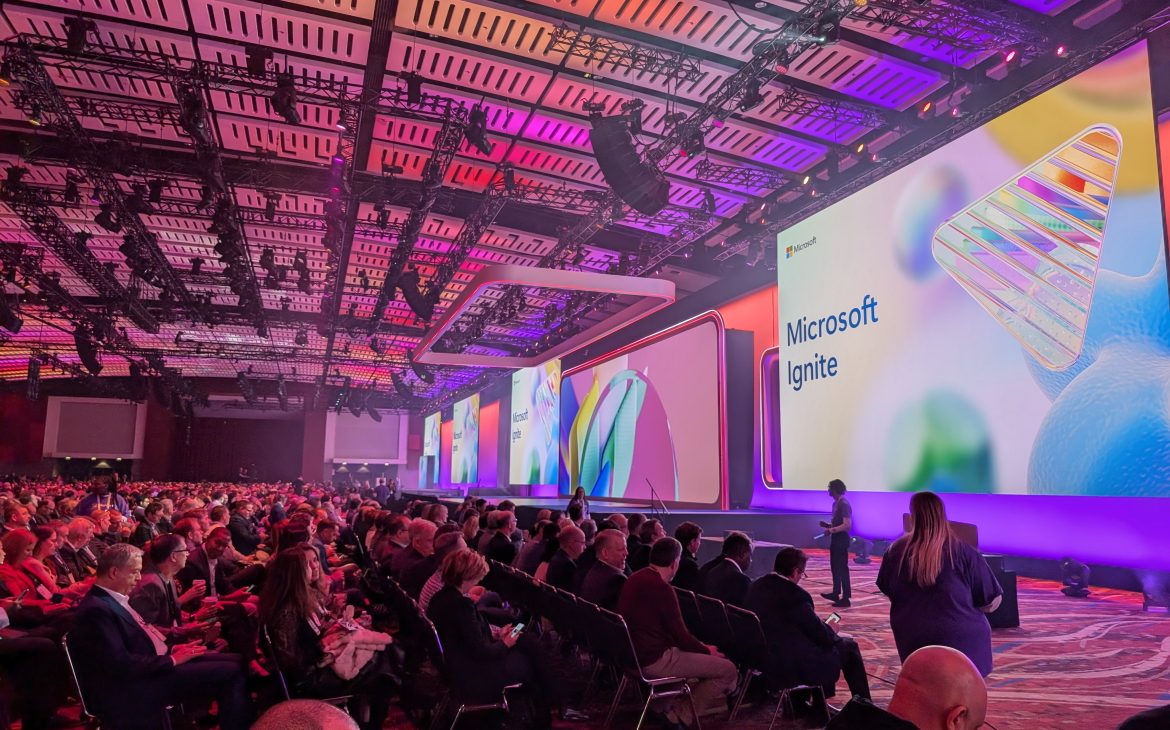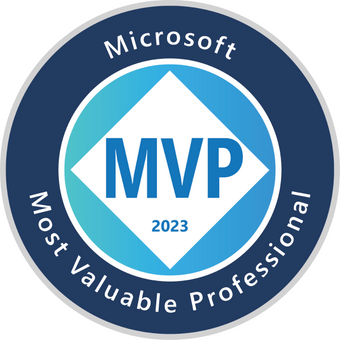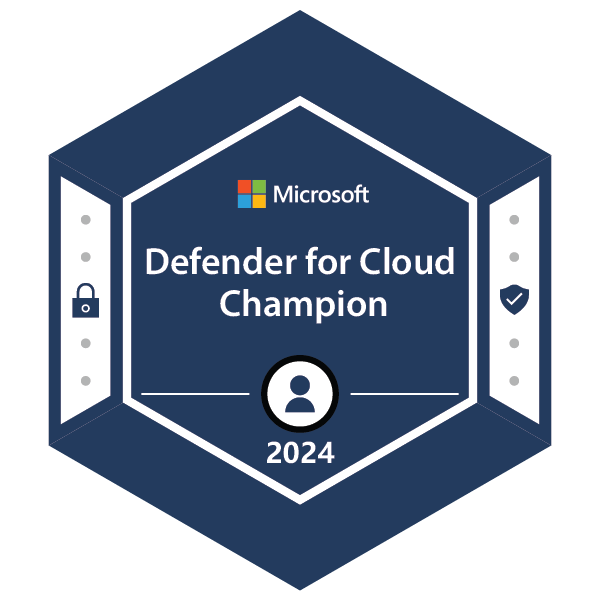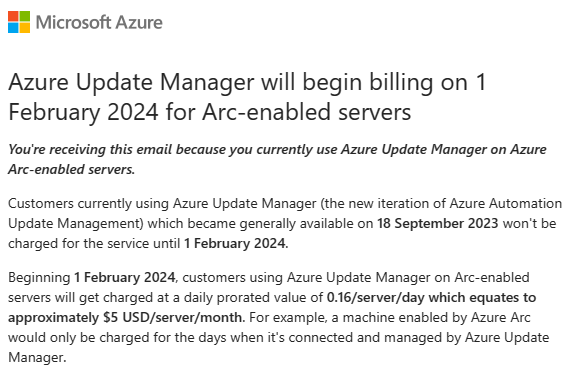Yesterday Thomas and I was really honored to be invited to the Azure APE XXL event in Appeldorn, Netherlands.

Yesterday Thomas and I was really honored to be invited to the Azure APE XXL event in Appeldorn, Netherlands.

On my way home from a very inspiring Microsoft Ignite, which I was able to attend in person for the first time. Microsoft Ignite 2024 took place in Chicago at McCormick Place, a very large convention center near Lake Michigan.

The conference started on Monday with a Preday, where Microsoft Ignite attendees had the opportunity to attend various workshops after registering. I took the opportunity to get to the venue, get my badge and meet some people from the community. In the evening, Microsoft had organized an MVP Meet and Greet where MVPs had the opportunity to meet other MVPs who were also attending Ignite. It was a great evening and I saw many people from all over the world again.
Continue reading MS Ignite 2024 RecapI´m thrilled to announce that I have been invited to the Nordic Infrastructure Conference in Oslo, the NICconf, for the second time.

NICconf is a two-day event in the heart of Oslo with around 3000 particioants, focusing on Microsoft technologies such as Azure, Hybrid Cloud, Identity and Security. There will also be a pre-day organized where attendees can participate in different masterclasses (full day workshops). There will be a masterclass by Paula Januszkiewics or Mikael Nyström and Viktor Hedberg,
Continue reading Speaking at NICConf 2024 in Oslo about Microsoft Defender for CSPM and Hybrid Cloud with WS2025, Azure Arc and WACPassword spray attacks on accounts have increased rapidly in recent months. As a result, the security risks for accounts that do not use MFA for authentication have increased significantly. Microsoft works in the past on different ways to enable MFA for all users they work with Azure and Microsoft 365. One first try was the activation of security defaults, but this can be deactivated by user.
Based on this development and for other reason Microsoft announced the enforcement for Mutlifactor authentication for all sign-in/access to the Azure Portal. This announcement was a little suprise and bringe some challenges to organization espesically when we take a look at service principals and break glass accounts. Don´t get me wrong, it is mandatory to enable MFA for all users they access your tenant and have a valid and regulary reviewed Conditional Access policy in place. But for some special accounts this was not the focus or recommended. In this article I will explain how Microsoft rollouts this enforcement which steps you have to proof and how you can ensure that you are not affected or prepared for the upcoming changes.
Continue reading Microsoft enforces MFA requirements for user login to Azure portal for all tenantsI am pleased to announce that I have once again been recognized as a Microsoft MVP for Azure and Security in 2024-2025. This year there were some internal changes and the announcement was therefore postponed to July 10. So late Wednesday the mail came and I saw, just before my birthday, that I was again awarded in the following categories:

What a great surprise
It is still an honor to be part of this family. There are many people who have supported me along the way, without whom this award would not have been possible. A big thank you goes to my wife Jessica, without her support this would not have been possible. There are many people who have become true friends during this time and to whom I am very grateful for their support, like Eric Berg, Thomas Naunheim, Marcel Meurer and Tom Janetscheck and many others. Also a big thank you to my Azure Bonn Orga Team, René de la Motte and Thomas Naunheim without whom the many Meetups and the Cloud Identity Summit would only be half as nice.
But this award is not possible without the community and the recognition from Microsoft, so a big thank you for that.
If you’re interested in what conferences you can find me at in 2024, feel free to check out my upcoming community events page.
The Microsoft Security Community programm continues to grow and there are many exiting new features and additional previews coming to live. I´m working on some of the new previews to gain insights and provide feedback and there are really great new offerings coming.
I`m happy to share that I was awarded as Defender for Cloud Champion and as Community Advocate 2024.

In 2023 I was at some conferences where I held a session about Azure Cost Management and I´ve discussed this topic also a couple of times with my best buddy Eric Berg.
He invited me to his podcast Geeksprech where we talked and discuss what FinOps is and why in some cases it`s the same as cloud governance and cost management without the melodious and modern name 🙂
Continue reading Guest on Geeksprech Podcast about FinOps and/or Azure Cost Management (Governance)With the announcement of the next Windows Server release, called Windows Server 2025, Microsoft decided to organize the next Windows Server Engineering Summit. The Windows Server Summit 2024 will take place March 26-28, 2024, 8 AM – 4 PM Pacific Time with many sessions around Windows Server solutions.
I´m happy to be invited to hold two sessions, which I think are really important and value from Management and Migration purposes.
Continue reading Speaking at Windows Server Engineering Summit 2024In the first part of this article (Three-big-reasons-to-migrate-to-update-manager-and-forget-the-classic-update-management-center) I dived into the improvements and reasons why Micrsoft introduce Azure Update Manager as a successor of the classic Update Management Center solution based on Azure Automation. In this part, I will explain how it works and what major improvements and new functions the Azure Update Manager offers
Please note: Azure Update Center is based on Azure Automation and needs the Microsoft Monitoring Agent. The MMA has been discontinued and will no longer be supported after August 2024. Support for Update Center has therefore also been discontinued.

Continue reading The new Azure Update Manager is GA – Part 2 – How it works and the valuable new features2nd note: Microsoft will charged at a daily prorated value of 0.16/server/day which equates to approximately $5 USD/server/month beginning 1 February 2024 for customers using Azure Update Manager on Arc-enabled servers.
Microsoft model for a scalable Cloud Adtoption is based on the Enterprise Scale Architecture and I think this is a scalable and useful modell for every customer that uses Azure ressources. It´s based on the definition to granulary devide the workloads in different subscriptions and gives via Management Groups the possibility to group this differnent subscription into workload groups like Development, Core, etc. I know many customers struggle with this model and mistakenly think that Enterprise Scale is a reference to Enterprise customers, but this is not the case.
Based on the Enterprise Scale Architecture some services and security features can only be activated on subscription level to guarante that each resource inside the subscription is secured. This basis makes it even more important for customers to consider the Enterprise Scale Architecture or to orient themselves towards it.
The Microsoft Defender for Cloud and especially the Defender for Server P1 and P2 plans can only be activated on subscription level in the past. Microsoft has decided to change this and now allow plans to be activated at resource level (per server). It is important to understand that the principled approach activating on Subscription Level and the Enterprise Scale architecture are still valid and needed and this possibility is only a concession to cover certain requirements: